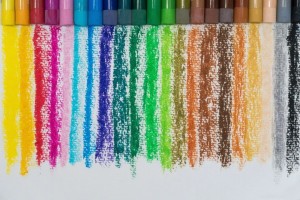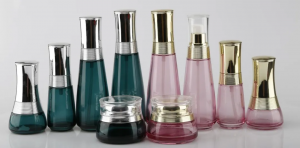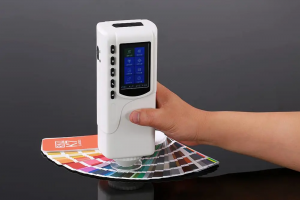No leaf in the world is exactly the same in shape and color, and the same is true for the cosmetic packaging industry. The surface of the packaging material product is processed by painting, electroplating and other processes. Due to time, temperature, pressure, labor and other reasons, each batch of products will be different. Therefore, color difference will be a relatively headache for packaging supply chain managers. Due to the lack of color difference standards for the surface of packaging materials, communication frictions often occur between procurement and supply. Color difference problems are inevitable, so how to formulate corporate standards for color difference tolerances for the appearance of cosmetic packaging products? In this article, we will briefly outline.
1. The purpose of establishing color tolerance standards: First, the purpose of establishing color tolerance standards needs to be clear. This may include ensuring product appearance consistency, providing brand recognition, meeting consumer expectations, and complying with industry standards and regulations. Knowing the goals will help ensure that the color tolerance standards established can achieve the required quality control and market requirements.

2. Understand the color requirements of the cosmetics industry: The cosmetics industry generally has high requirements for color consistency and appearance. Consumers are more sensitive to the color and texture of cosmetics, so their tolerance for color difference is relatively low. Understanding the color requirements and industry standards within the industry, such as ISO
10993 (for biocompatibility) or relevant regulations in specific countries or regions (such as FDA, EU REACH, etc.) can provide useful references for formulating color difference tolerance standards.
3. Consider product type and color characteristics: Different types of cosmetics may have different color characteristics and appearance requirements. For example, makeup products such as lipstick and eye shadow usually have high color requirements, while skin care product packaging may pay more attention to appearance and texture. Different color difference tolerance standards can be formulated for different product types and color characteristics according to their importance and consumer expectations.

4. Use professional color difference measuring instruments: To ensure measurement accuracy and repeatability, high-quality color difference instruments, such as colorimeters, should be selected to accurately measure and evaluate the color differences of samples. Based on the measurement results, specific color difference tolerance standards can be formulated. At the same time, the accuracy and stability of the measuring instrument must be ensured to obtain reliable measurement results. At the same time, attention should be paid to the interference of ambient light to ensure accurate measurement of the color difference of the target color. The measurement results can be expressed in numerical form, such as ΔE value, or presented in the form of color difference graphs.

5. Refer to color difference formulas and industry standards: Commonly used color difference formulas include CIELAB, CIEDE2000, etc. These formulas take into account the sensitivity and perception of the human eye to different colors and can provide more accurate color difference evaluation. In addition, there may be some specific standards and regulations within the industry, such as color consistency guidelines, guidance documents of industry associations, etc. These formulas and standards can be referred to to formulate color difference tolerance standards suitable for cosmetic packaging products.
6. Conduct actual measurement and evaluation: Use color difference measuring instruments to measure actual samples, and compare and evaluate the measurement results with the formulated color difference tolerance standards. When conducting actual measurements, it is necessary to consider the number and representativeness of samples, as well as the specifications and conditions of the measurements. A batch of samples, including products of different colors and different batches, can be selected to obtain comprehensive data. Based on the measured data and color difference evaluation, it is possible to verify whether the formulated color difference tolerance standards are reasonable, and make necessary adjustments and optimizations. Through actual measurement and evaluation, you can understand the color difference range of the product and its compliance with the formulated color difference tolerance standards. If the color difference of the sample exceeds the established tolerance range, you may need to re-examine the rationality of the standard and work with suppliers and manufacturers to identify and resolve the problem. In addition, continuous monitoring and regular inspection of the color difference of the product are key steps to ensure product consistency to ensure stability and effectiveness of quality control measures during the production process.
7. Consider batch variability: When formulating color difference tolerance standards, the variability between different batches also needs to be considered. Due to changes in raw materials and processes during the production process, there may be a certain degree of fluctuation in the color difference between different batches. Therefore, the formulated color difference tolerance standards should allow a certain range of variation to ensure consistency between different batches.
8. Communicate with suppliers and manufacturers: It is very important to establish good communication channels with suppliers and manufacturers. When formulating color difference tolerance standards, discuss their technical capabilities, production processes, and quality control measures with suppliers. Ensure that suppliers understand and accept the standards established and are able to provide packaging products that meet the requirements.
9. Implement sampling inspection: In order to verify whether the packaging products provided by suppliers meet the color difference tolerance standards, sampling inspections can be carried out. Choose a suitable sampling plan and ensure that the sampled products are representative to reflect the quality of the entire batch. Sampling inspections should be conducted at a certain frequency to ensure the stable quality of the supplied packaging products. 10. Continuous monitoring and improvement: Establishing color difference tolerance standards is not the ultimate goal, and continuous monitoring and improvement are very important. Regularly evaluate and review the established standards, taking into account any changes related to production and market demand. When problems are found, conduct root cause analysis and work with suppliers to solve the problems to continuously improve color difference control measures.
Summary: In the cosmetics industry, the formulation of color difference tolerance standards for the appearance of cosmetic packaging products requires comprehensive consideration of many factors, including industry requirements, product types, consumer expectations, and supplier capabilities.
Post time: Sep-20-2024

